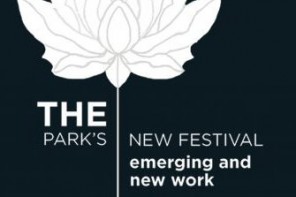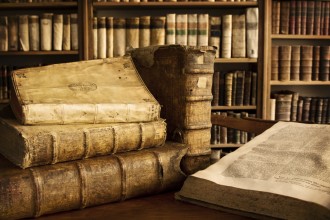The word chiaroscuro pretty much defines itself. The word Chiaroscuro itself is Italian, and roughly means, “light and dark.” Chiaroscuro art was first used to describe a type of drawing on medium-dark paper where the artist created darker areas with ink and lighter areas with white paint. It refers to the use of highlights and shadows in a composition to create the illusion of light from a specific source shining on the figures and objects depicted. Sometimes, vigilant use of tonal contrasts is leveraged to suggest the volume and modelling of the subjects depicted.
IMAGE COURTESY – leone-art.deviantart.com
The first use of chiaroscuro-style three-dimensional shading (known as “skiagraphia” or “shadow-painting” in Ancient Greece) is traditionally ascribed to Apollodoros, the noted painter of 5th century Athens. Enduring in a somewhat primitive form during the era of Byzantine art (c.400-1400), the technique was refined in the West during the late Middle Ages and by 1400 was a standard feature in both gospel illuminations and paintings.
Chiaroscuro was heavily used by the painters of the Renaissance period to make their paintings look truly three-dimensional and also a “reflection” of the real world. They realized that the contrast between areas of light and dark can heighten the impact of an image. As the Renaissance gave way to the Baroque, a style that emphasized drama and emotional intensity, some artists developed an exaggerated form of chiaroscuro known as tenebrism , from the Italian word tenebroso, meaning gloomy or murky.
IMAGE COURTESY – wikipedia
The painting technique of chiaroscuro takes advantage of the special qualities of oil paint that replaced tempera as the medium of choice for painters in Europe during the Renaissance. Tempera paint, usually made with egg yolk, was opaque and acted more like enamel. It’s very difficult to model three dimensional figures using tempera. Unlike tempera, oil paint could be easily blended and shaded, built up in layers, or applied in translucent glazes. By applying light tones on top of dark, painters could create the effect of figures emerging from shadow.
The term chiaroscuro can also be applied to drawing, but in a very specific way. A chiaroscuro drawing is made on medium-toned paper using both dark and light (usually white) lines to create the illusion of three dimensions.
Leonardo da Vinci (1452-1519) is considered an important figure in the development of chiaroscuro, especially in his later works, but he’s best known for his use of another technique, sfumato, meaning smoky, in which the outlines of figures are softened, as if seen through a haze of smoke. He was the first artist to use value consistently across colours, achieving tonal unity in which a figure presents a single, swelling, homogeneously generated volume in contrast to the inevitably fragmented effects of colour-modelling.
IMAGE COURTESY – tiffanyschultz.com
Describing his Chiaroscuro technique, Leonardo da Vinci had said:
I would remind you O Painter! To dress your figures in the lightest colors you can, since, if you put them in dark colors, they will be in too slight relief and inconspicuous from a distance. And this is because the shadows of all objects are dark. And if you make a dress dark there is little variety between the lights and shadows, while in light colors there will be greater variety.
Among the Baroque artists most strongly associated with Chiaroscuro technique are the Italian painter Caravaggio (1571-1610), the French painter Georges de La Tour (1593-1652), and Dutch painter Rembrandt van Rijn (1606-1669). However, it is believed that Chiaroscuro truly came to life in the paintings of Caravaggio during the late 16th century.
Caravaggio used deep, dark backgrounds for many of his paintings. The high contrast in those paintings made for intensely powerful and dramatic works of art. Because of Caravaggio, Chiaroscuro became very popular, and today the word is often used to mean “high contrast” more than anything else. Sometimes the source of the intense illumination in a painting (whether by Caravaggio or other artists) was actually in the painting such as in religious works, where an angel or other holy figure actually illuminates the entire scene, other times the light source is simply a candle, or a fire.
IMAGE COURTESY – artable.com
All of these situations offered artists a chance to explore silhouettes and other extremes, and occasionally made the emphasis on light and shadow more important than the scene itself. Rembrandt knew the value of Chiaroscuro’s direct lighting. He softened edges and lessened the contrast of “true” Chiaroscuro to lend calmness to his paintings.
IMAGE COURTESY – jessicacrabtree.com
For painters today, dramatic lighting is a tool to be used intentionally, with care. When the focus of a painting is upon the form of objects, or the shape of a figure, then Chiaroscuro can be exceedingly helpful. Strong directional light lifts out details and features, and gives a true and flabbergasting three-dimensional appearance.
While sometimes, Chiaroscuro can get a little harsh on portraits making them look unnatural to a certain extent or just too dramatic for what the artist is trying to portray.
Well, now we guess you are in a position to decide for yourself whether the presence of high contrast in a Chiaroscuro artwork is helping or hurting the overall message of the painting.

















